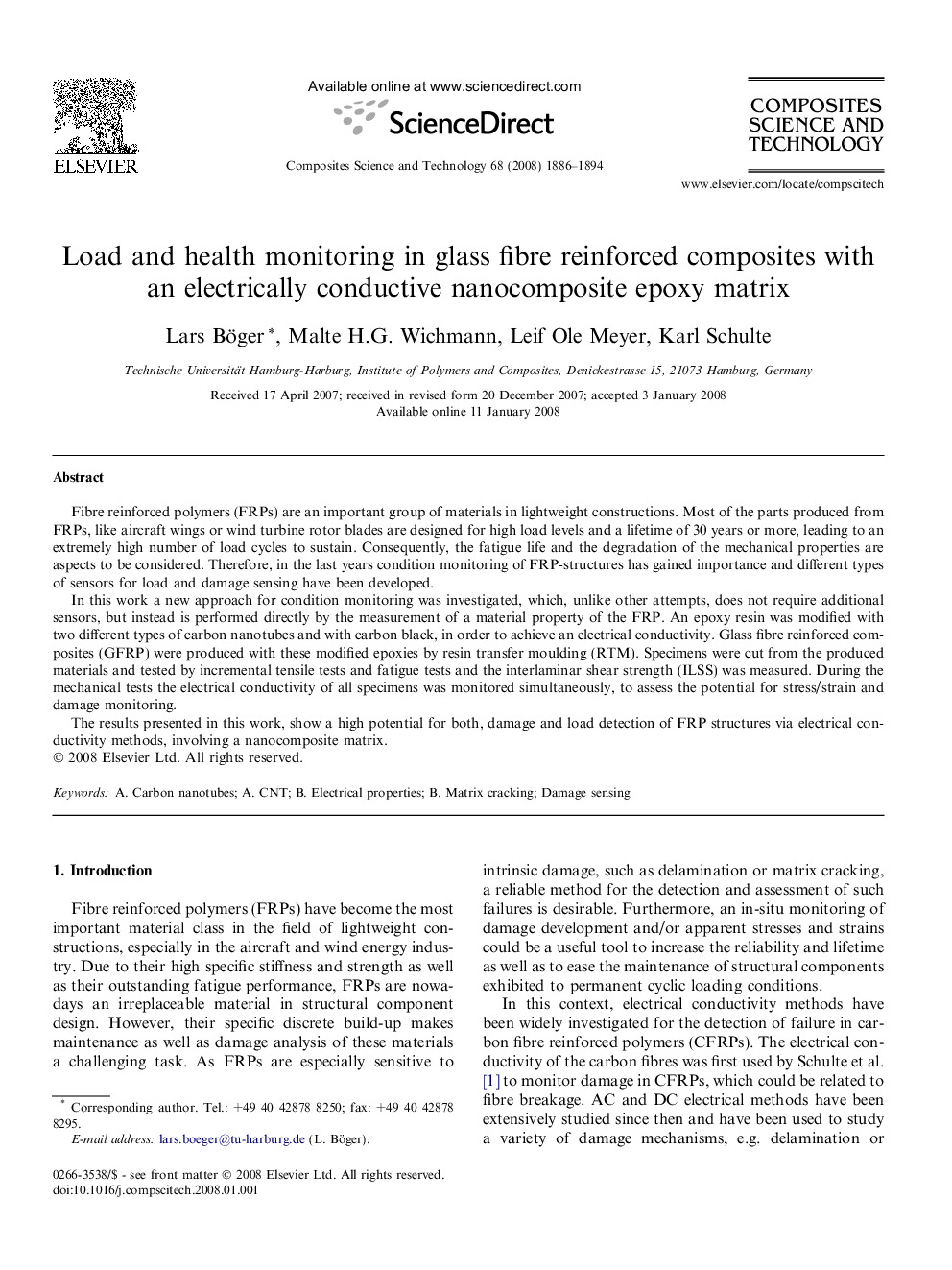| Article ID | Journal | Published Year | Pages | File Type |
|---|---|---|---|---|
| 822238 | Composites Science and Technology | 2008 | 9 Pages |
Fibre reinforced polymers (FRPs) are an important group of materials in lightweight constructions. Most of the parts produced from FRPs, like aircraft wings or wind turbine rotor blades are designed for high load levels and a lifetime of 30 years or more, leading to an extremely high number of load cycles to sustain. Consequently, the fatigue life and the degradation of the mechanical properties are aspects to be considered. Therefore, in the last years condition monitoring of FRP-structures has gained importance and different types of sensors for load and damage sensing have been developed.In this work a new approach for condition monitoring was investigated, which, unlike other attempts, does not require additional sensors, but instead is performed directly by the measurement of a material property of the FRP. An epoxy resin was modified with two different types of carbon nanotubes and with carbon black, in order to achieve an electrical conductivity. Glass fibre reinforced composites (GFRP) were produced with these modified epoxies by resin transfer moulding (RTM). Specimens were cut from the produced materials and tested by incremental tensile tests and fatigue tests and the interlaminar shear strength (ILSS) was measured. During the mechanical tests the electrical conductivity of all specimens was monitored simultaneously, to assess the potential for stress/strain and damage monitoring.The results presented in this work, show a high potential for both, damage and load detection of FRP structures via electrical conductivity methods, involving a nanocomposite matrix.
